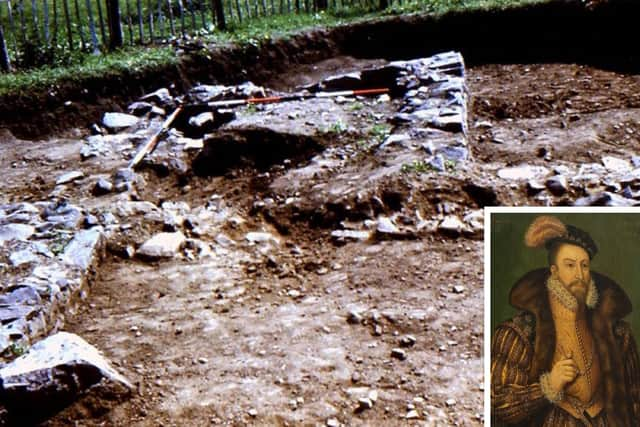Tumultuous years in history books
and live on Freeview channel 276
This came about chiefly because of the religious strife in Scotland as Mary and her followers followed the Catholic faith while the majority of the population supported Mary’s half-brother James, the Regent Moray and the Protestant cause. Many sought to take advantage of the political chaos.
The effect of the strife is recorded in a variety of sources, including Lanark’s Burgh records. One of the decisions made by the burgesses was to fortify Lanark with a number of gates or ports. The name port comes from the Latin word for gate. Their locations survive in the names of streets such as Westport and Wellgate.
Advertisement
Hide AdAdvertisement
Hide AdThey survived up to the 18th century when they were deemed to have outlived their usefulness with one exception, Wide Close through which traffic from Linlithgow and the North came. It ceased to have this status when Hope Street was created in the 1820s.


The back walls of the properties of the burgesses completed the town’s defenses, but they would not have presented a serious problem to anyone attacking the town. So a local militia was raised which held regular meetings on the castle mound to review their fitness.
The records reveal that they were poorly armed with only a few pistols between them; most were equipped with swords and halberds. These meetings were recorded as ‘Wappinshaws’ or displays of weapons.
It was also at this time that interest was shown in checking the burgh boundaries, a task assigned to a Cornet and several other townsmen. That tradition is still maintained in the Lanimers.
Advertisement
Hide AdAdvertisement
Hide AdOut in the countryside the threats to life and limb were more severe. We know, for example, that the forces of the Regent Moray in 1580 burnt the village of Over Quothquan on their way to attack Boghall Castle near Biggar in 1569. Boghall Castle was the home of the Fleming family who were Catholic; one of their number Mary Fleming was a lady in waiting to Mary Queen of Scots. She held that post during Mary’s stay in France. This attack was to result in the castle having a wall with towers and a gateway built round it.
I found a relic of the fighting during this period in the porch of St Mary’s, where it had lain for many years. This looked like an iron barrel with a triangular projection – a hagbut or hook gun. Lacking its wooden stock, nevertheless it was a very rare example of 16th century weaponry.
It would be hooked over a window sill as the recoil would be such that it would break a person’s shoulder. They used black powder as the propellant and it would fire a projectile either of lead or stone, the size of a golf ball. The rate of fire was once every 15 minutes as the heat from firing it would pre-ignite the powder. It was very dangerous to fire. In reality it was more of a danger to the user than the enemy. However, the spectacular bang was something of a deterrent.
Boghall Castle easily fell to the Regent Moray; however, the political chaos continued for a number of years until the death of Mary Queen of Scots in 1587 and the defeat of the Spanish Armada in 1588.